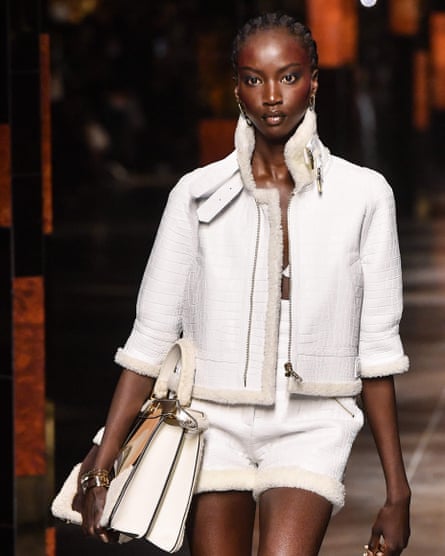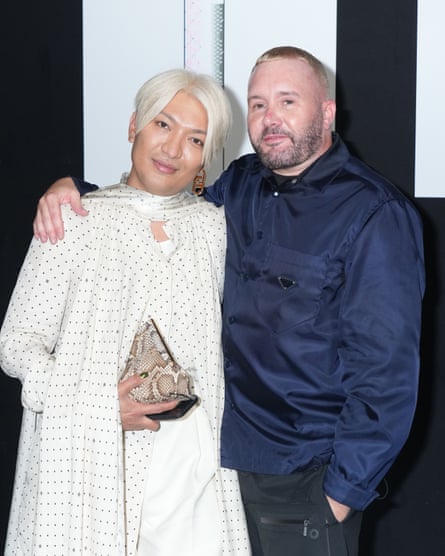Milan “looks lively again, people are out for dinner and enjoying themselves”, reports British fashion designer Kim Jones, whose Fendi show fired the starting pistol as the Milan catwalks return to full speed. “Or at least, that’s how it looks from what I can see out of the car window when I’m on my way back to the hotel after work. I’m happy that fashion week is back, but I’m still pretty much isolated. I’m double vaccinated but I can’t risk getting a positive result and not being able to work.”
Instead, his Fendi show was staged as a Studio 54 night out in miniature, albeit one with a masked and socially distanced audience. Models with slicked back hair and bronzed cheekbones stalked a mirrored catwalk, spotlights tracking them like the roving eye of a disco ball. There were white trouser suits sharp enough for Bianca Jagger and kaftans fit for a Halstonette, but Jones’s muse for the collection was the less well known Antonio Lopez, a cult fashion illustrator who partied with Andy Warhol and was briefly engaged to Jerry Hall. Lopez had strong links with Fendi, as a collaborator of Karl Lagerfeld, Jones’s predecessor at the house.

Traditional fashion illustrations, all raised chins and angular froideur, imposed a conservative aesthetic on fashion for decades until the early 1970s when the soft, sensuous drawings of Lopez helped usher in a new era of freedom. Lopez was also an early champion of model diversity, supporting the careers of models of colour including Carol LaBrie. The spirit of Lopez, whose sketches appeared on coats and handbags in this collection, evoke the most iconic of parties while also rooting Fendi in modern values of diversity and inclusivity. It is not for nothing that Jones is one of the industry’s most sought-after designers.
Jones believes that a career spent mostly designing for men – he remains artistic director for menswear at Dior – has been good training for the current mood in fashion, when women are looking for versatile, real-life clothes. “Years ago when I was at Dunhill, every time I was at the airport I’d watch men taking their laptops in and out of bags, to figure out what made bags work for them or not. Functionality has always been super important in menswear, and it’s becoming more important in womenswear.”

While designing womenswear, he relies on feedback from “a gang of female friends of different ages who all have incredible taste. They tell me what they are looking for and I listen”. Right now, the Fendi customer wants “a luxurious sense of reality, with a bit of optimism” he says. “We all want to get back into life as normally and as safely as possible.”
The Fendi catwalk crystallised several emerging trends for next season. The out-of-office trouser suit as eveningwear, trousers double-pleated at the waistband, midriff-baring bra tops and fringed cocktail dresses made a strong showing. Milan returns to a mostly physical show format this week, with Gucci the only major brand missing from the schedule.
